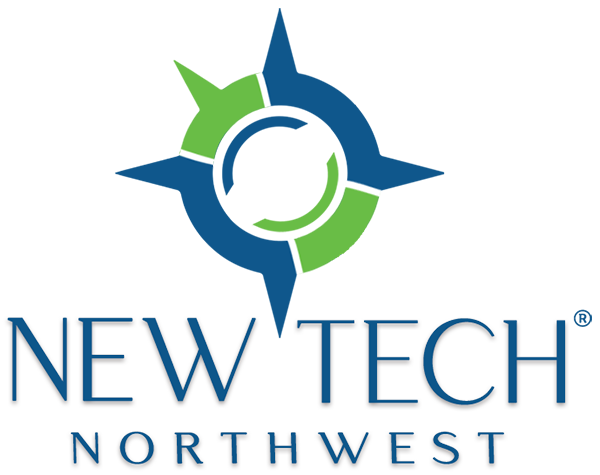We Finally Did It!
In 2007 we raised $2 million in venture capital for SlideRocket. We had been building the business for over a year and had been talking to potential investors for almost as long. I got to meet amazing people like Fred Wilson and Tim Draper along the way—most of whom said no.
What makes some investors say yes?
I’ve learned to focus on 8 different areas to grab people’s attention. Today, I’m going to share some of the most effective ones with you using examples from actual pitch decks.
People read about venture capital and to think it will be easy—but many startups find out that it’s not. Raising money takes a smart strategy and a ton of effort. Here was Buffer’s experience:
“The law of averages really comes into play with raising investment. Overall, we probably attempted to get in contact with somewhere around 200 investors. Of those, we perhaps had meetings with about 50. In the end, we closed a $450k seed round from 18 investors. Perhaps the most important part of our success in closing that round was that Leo and I would sit down in coffee shops together and encourage each other to keep pushing forward, to send that next email asking for an intro or a meeting. In many ways, the law of averages is the perfect argument that persistence is a crucial trait of a founder.”
Can I guarantee that you’ll be able to raise money? Probably not.
But can you increase your chances significantly? Absolutely.
I’ve compiled all 8 areas into an easy-to-use guide with specific examples that you can download and follow as you develop your own pitch deck.
The Main Takeaway
The most effective strategy is to take your pitch out of the realm of “I think” and into the realm of “I know.” Two magical things happen once you do this:
- You’ll be able to raise money
- You may not need to raise money.
What Are Investors Looking For?
Peter Livingston is a professional angel investor based in Miami who looks at 60 to 80 pitch decks per month. That’s close to 1,000 every twelve months. He’ll invest in maybe 20 startups this year, which is around 2%. You have to be the best of the best to get his attention.
Wow.
How do you make sure that you stand out in the crowd?
First of all, here’s what not to do. At least half of the decks I see basically say, “Give me your money and I’ll figure it out.” Yuck.
This may work if you’re raising from friends, family, and fools who believe in you (thank you, Mark Volchek, for that term). If you’re talking to a professional investor like Peter Livingston, however, you’ll need to put the “plan” in “business plan.” Your idea, and the specifics of your product or service, are actually the least important part of your pitch deck. There are millions of good ideas out there, but only a few people who can actually make them work.
The Eight Key Drivers for Your Investor Pitch
- Traction
- Team
- Business model
- Marketing Plan
- Rational financials
- Growth opportunity
- Defensibility
- The ask
1) Traction: This is where the rubber meets the road. Investors hear a ton of people claiming to know what will happen (“I think”), so you stand out by proving that you’re already making it happen (“I know and here’s the data”).
Traction is a measure of how close you are to reality—i.e. making money.
Leo Widrich, one of the founders of Buffer, says it best: “We quickly realized that as first time founders, this was probably our only way to raise any money: by focusing everything on the traction slide.”
Here’s an example of a traction slide that sucks. The total number of signups is the kind of “vanity metric” that Eric Ries talks about in The Lean Startup, because the chart will only ever go up and to the right. You will keep getting signups, so it doesn’t mean anything. You will go out of business getting signups if no one sticks around to use your product.

The only thing that matters is how many people come back and use your product or service repeatedly.
Now look at this great slide from Buffer. They are showing a 1.5% conversion rate from free to paid (800 paying users out of 55,000 total users) so you can see that this is a real business that’s growing. You can also see that they have a handle on their finances because they know their run rate and margins. This is what makes people want to invest!

Here’s another example from a company called Blinq that’s seeing 60% daily actives out of their total installed base, and people are using the app 5 times per day. So that tells us the usage, which is what’s actually important.

Check out Fred Wilson’s excellent blog post on the atomic unit of your product / service, where he explains how to think about engagement. Show investors that your audience is engaging in your atomic unit.
2) Team: Have you done this before or is this your first time? It’s certainly helpful if at least one of your founders has crushed it with a previous company or two.
Blinq has founders with maybe an exit or two (but it’s not totally clear what “2 scale businesses” and “2 successful startups” mean) and one of them is a bestselling author. These are things that make me trust the team more. It doesn’t mean they’re necessarily going to succeed, but it works in their favor.

But what If you don’t have those kind of credentials?
You still need to prove that you’re the right people for the job. Here’s an effective slide from Buffer. The two founders don’t have previous exits, so instead they talk about what they’ve already done for Buffer. The first guy took it from idea to revenue in seven weeks—wow that’s impressive! And the second guy grew Buffer from 200 to 55,000 users, so okay I believe. Plus they have some fantastic advisors involved. So it seems like there’s a good chance this team will succeed, even without previous exits or a bestselling book.

3) Business model: First you need to clearly explain what you do. You’d be amazed by how many CEOs make this look hard! Sometimes I walk out of a meeting not really understanding the entrepreneur’s vision. Ugh.
Practice explaining your business to non-technical people. They should be able to understand what you do in 30 seconds or less.
Airbnb’s pitch deck starts with a summary, “Book rooms with locals, rather than hotels.” The slides lay out the problem and their solution. Now I have a clear mental and visual picture of what Airbnb does, who they’re appealing to, and the value to their customer.


Airbnb also included some product shots:

Does your company have a way to make money? Yes, I know that Facebook delayed making money while they built an audience, but it was always pretty clear how their business model would work. Can you clearly articulate how you’ll make money?
Our job as entrepreneurs is to create a working business model. Instead we as entrepreneurs tend to fall in love with our product or service—but that’s only one part of the equation.
Unfortunately I talk to many entrepreneurs who are very excited about their product or service, but haven’t really thought through who the customer is, how they’re going to reach that customer, how they’re going to extract value from that customer, and how they’re going to stay alive as a working business.
In this slide from Airbnb’s pitch deck they explain that 10.6 million trips have been planned on their service and they take a 10% commission. It makes complete sense.

What if your startup doesn’t have 10.6 million transactions yet? Here’s a slide from Buffer where they talk about their business model. They have a freemium version and they’re showing 2% conversion from free to paid. They have 5% churn. They know the lifetime value of their customer. And they know how much they can pay to acquire a user. These are all real numbers supported by data, which brings us back to traction.

Okay this post has already gone longer than usual, and we still have five more areas to focus on.
Conclusion
If you can only do one thing, focus on traction. Show that people are using your product or service, and hopefully that they’re paying for it.
Joel Gascoigne of Buffer says, “My advice for first time founders who want to raise funding is almost always to put that thought aside until you have good traction. Focus on product/market fit. When you have good traction, it becomes much easier to raise funding.”
Here’s a quick reminder of the 8 areas that interest investors. Every company has a different balance.
- Traction
- Team
- Business model
- Marketing Plan
- Rational financials
- Growth opportunity
- Defensibility
- The ask
I’ve put together a walkthrough of all 8 areas—including practical examples—that you can grab here and refer to when creating your own pitch deck.
Written by Mike Lingle — Read more practical suggestions for startups at mikelingle.com.













